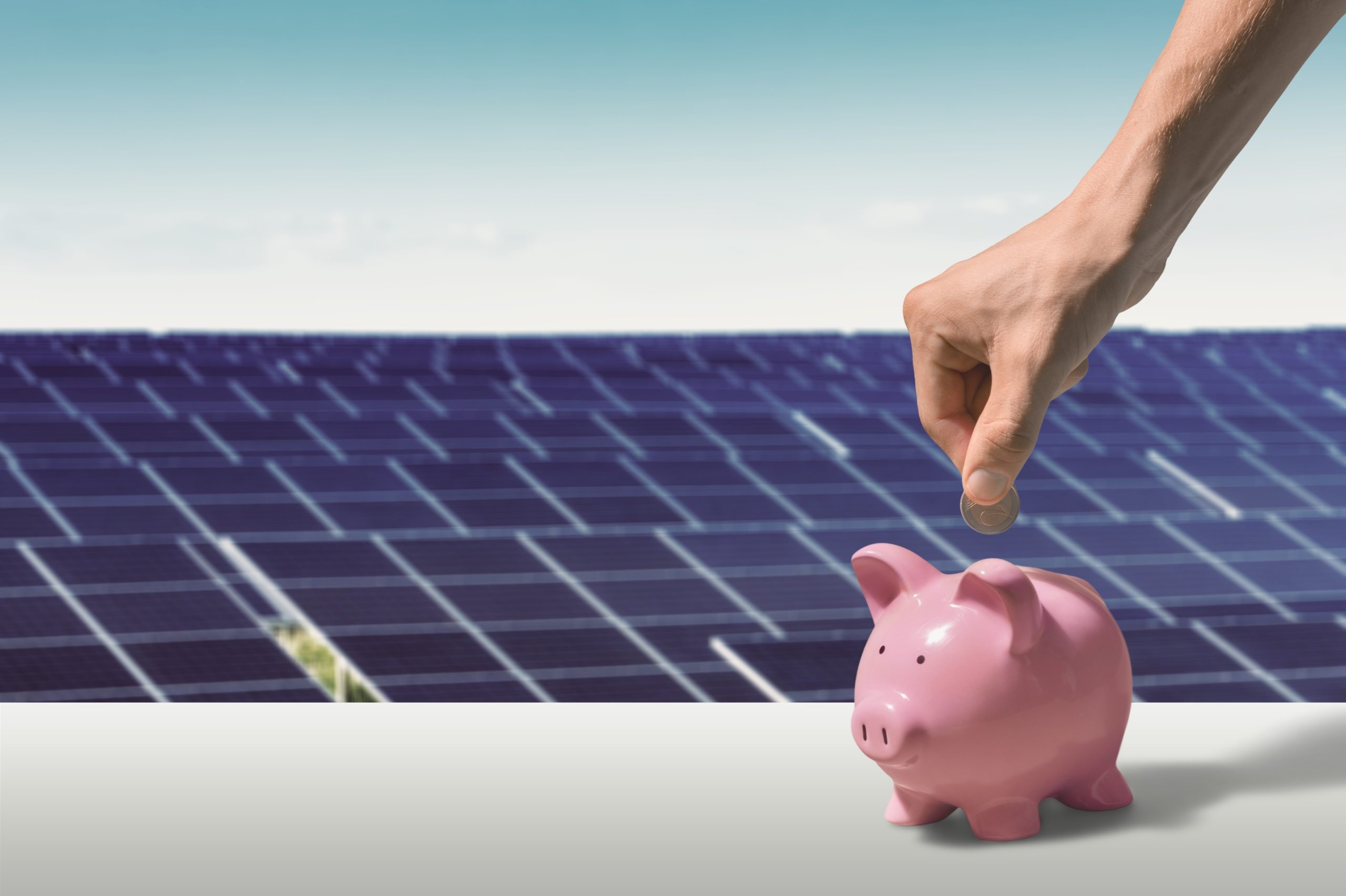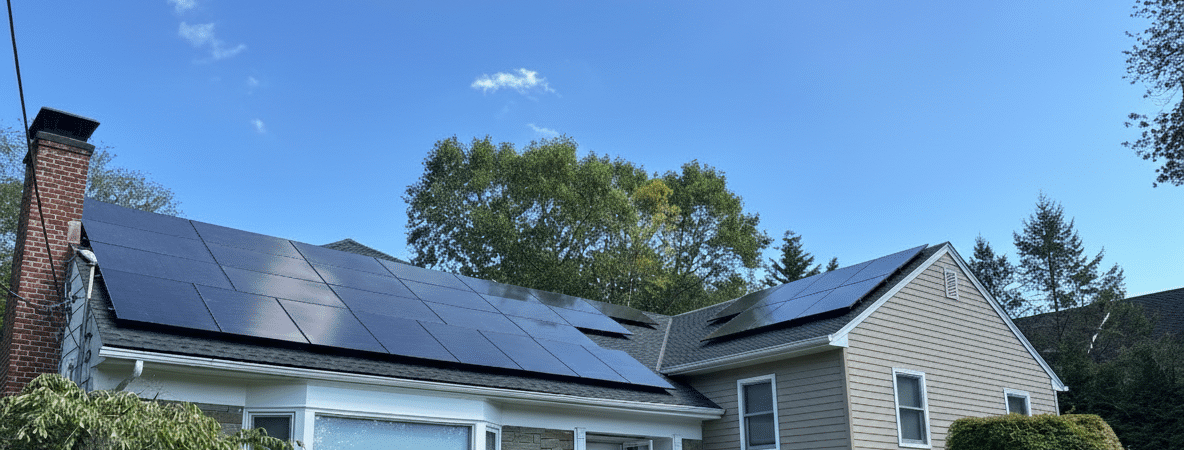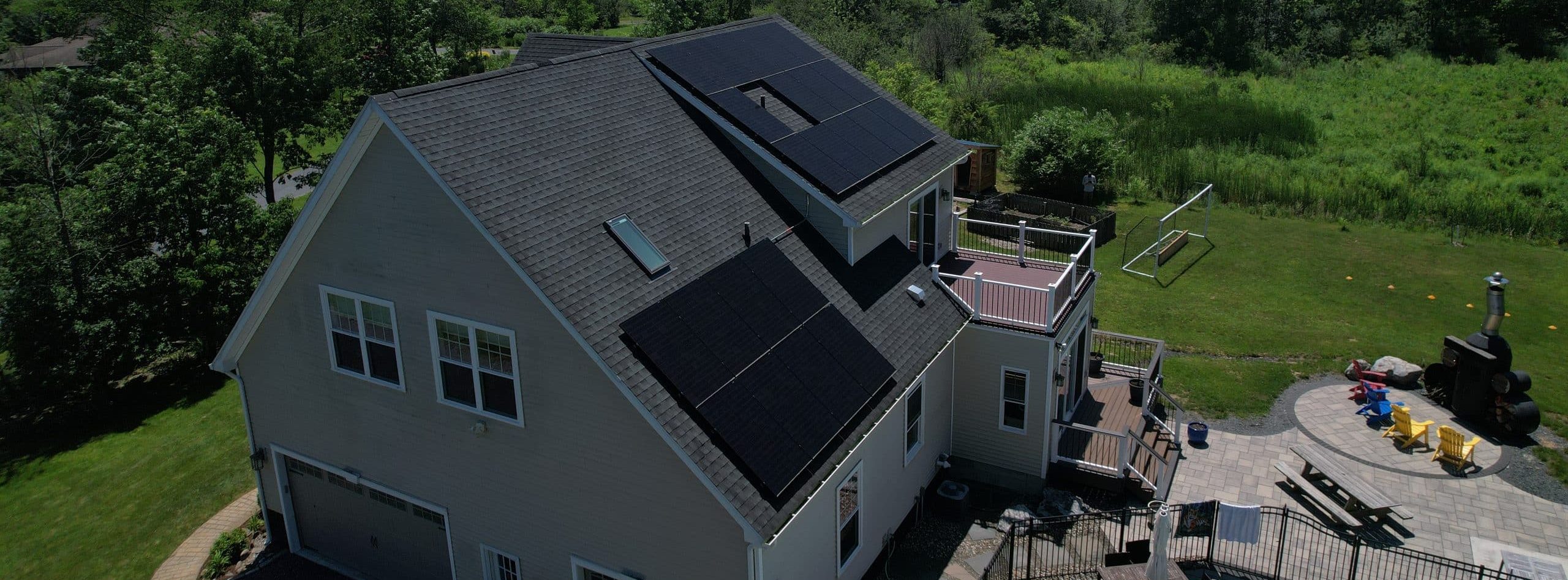[vc_row kd_background_image_position=”vc_row-bg-position-top”][vc_column][tek_divider div_shape=”dotted_line” div_width=”divider_full_width”][vc_column_text]
As utility prices keep rising and the negative effects of climate change become more apparent, there’s never been a better time to switch to solar energy. We’ll explore why switching to solar power is one of the best choices you can make for both your wallet and the planet. Learn how going solar can help reduce your energy costs while helping to preserve our environment.
It’s no secret that energy costs have been on the rise in recent years. In fact, according to the U.S. Energy Information Administration, the average household spends about $2,000 on energy bills each year. This amount is only expected to increase as time goes on, especially as we continue to rely heavily on fossil fuels to meet our energy needs.
Fortunately, there is a way we can save money on our energy bills and help the environment at the same time – by switching to solar power. Solar energy is renewable, meaning it will never run out, and it produces zero emissions when used, making it much better for the planet than traditional forms of energy like coal and natural gas.
The upfront cost of switching to solar can be high, but there are many ways to finance a solar installation, such as through government incentives. And once you’ve made the switch, you’ll start seeing savings right away on your energy bills. In some cases, you may even be able to sell excess power back to your utility company!
So if you’re looking for a way to fight rising energy costs and do your part for the planet, going solar is a great option.
If you’re ready to take advantage of all the benefits that come with going solar, contact us today at +1 845-250-3737 or visit us online at https://justgo.solar/ Infinity Energy can provide a free assessment and determine whether your house is qualified for solar energy installation. Let’s work together to make sure you get the most out of your solar panel installation!
Top Solar Questions:
How Do Solar Panels Compare to Forests in Terms of Carbon Dioxide Emissions Reduction?
Forests provide a range of benefits beyond capturing carbon dioxide. They serve as essential habitats for wildlife, help in filtering our drinking water, prevent soil erosion, and offer scenic beauty and recreational spaces for countless people. However, when it comes to the specific task of reducing carbon dioxide emissions, solar panels significantly outperform forests.
In the United States, the carbon emissions from electricity generated by natural gas-fired plants stand at roughly 1,071 pounds per megawatt-hour (MWh). In contrast, solar photovoltaic (PV) systems emit only about 95 pounds per MWh. This represents a substantial reduction of 976 pounds per MWh.
Utility-scale solar farms are incredibly efficient and typically produce between 394 and 447 MWh per acre annually. When these solar panels replace natural gas energy production, they can cut down approximately 385,000 to 436,000 pounds (or 175 to 198 metric tons) of carbon dioxide per acre each year.
In comparison, an average acre of forest in the U.S. captures just 0.84 metric tons of carbon dioxide annually. Thus, it’s clear that solar panels, when used to displace natural gas, can reduce carbon dioxide emissions by approximately 208 to 236 times more than an acre of forest.
In summary, while forests remain invaluable for numerous ecological reasons, solar panels provide a far superior solution for carbon emissions reduction when comparing acre to acre.
How Much Carbon Dioxide Can an Acre of Solar Panels Offset Annually Compared to an Acre of Forest?
When considering the impact of solar panels on carbon dioxide reduction, the numbers are impressive. If you replace natural gas with solar panels, an acre of these panels can offset between 385,000 to 436,000 pounds of carbon dioxide each year. This translates to about 175 to 198 metric tons annually.
To put this in perspective, an average acre of forest in the United States captures about 0.84 metric tons of carbon dioxide per year. This means that an acre of solar panels can reduce carbon emissions by approximately 208 to 236 times more than a comparable acre of forest.
Such a comparison highlights the significant environmental benefits of adopting solar panel technology over traditional methods of carbon sequestration like forests.
What Are the Cost Differences Between Installing Solar on Rooftops, Parking Lots, And Utility-Scale Solar Projects?
When considering the costs associated with solar energy installations, understanding the differences between various setups is crucial. Here’s a breakdown:
Utility-Scale vs. Rooftop Solar
Utility-scale solar projects are typically the most cost-effective option. The average installation cost for these large-scale systems is about $0.89 per watt. In contrast, rooftop solar projects are significantly more expensive. For commercial rooftops, the cost averages $1.56 per watt, while residential rooftops can reach up to $2.65 per watt. This makes rooftop installations approximately 1.75 to 3 times more costly than their utility-scale counterparts.
Solar Canopies in Parking Lots
Solar canopies, which are often built over parking lots, also tend to have higher costs compared to utility-scale solar. Industry estimates place the cost at around $3 per watt, with some evaluations, such as those from Energy Sage, suggesting an average installation cost of $3.31 per watt. A notable example is the solar canopy project at JFK International Airport, where the costs amount to $4.55 per watt.
Cost Recovery Challenges
While solar canopies can potentially offset their higher costs by charging premiums for shaded parking, this isn’t always feasible, particularly in areas where parking is typically free. It’s also important to note that the maintenance of dispersed small units, like those found in residential or commercial setups, tends to be more expensive than managing a single, large-scale system.
In summary, utility-scale solar remains the most cost-effective option, while rooftop and solar canopy installations offer more expensive alternatives due to higher installation and maintenance expenses.
How Do Installation and Maintenance Costs Vary Between Residential, Commercial, And Utility-Scale Solar Projects?
Comparing Costs: Residential, Commercial, and Utility-Scale Solar Projects
When examining the financial implications of solar projects, the cost per watt can vary significantly depending on the type of installation: residential, commercial, or utility-scale.
Utility-Scale Solar: Efficient and Cost-Effective
Utility-scale solar projects are the most economically viable, with an average installation cost of around $0.89 per watt. These large-scale projects benefit from economies of scale, making them more cost-effective compared to smaller installations. Additionally, having a centralized system means maintenance is less costly and simpler to manage compared to dispersed units.
Commercial Rooftop Solar: A Middle Ground
For commercial buildings, installing rooftop solar systems is moderately priced, coming in at approximately $1.56 per watt. These systems offer a good compromise, providing significant energy savings while maintaining manageability in terms of upfront costs. Though more expensive than utility-scale projects, their installation within business premises often meets company sustainability goals and offers visibility to eco-conscious customers.
Residential Rooftop Solar: The Most Expensive Option
Residential projects are the priciest option, with costs averaging about $2.65 per watt. This higher price can be attributed to the smaller scale and customization required for individual homes. While the initial investment is steeper, homeowners benefit from energy independence and potential increases in property value. Maintenance for residential setups can also be more challenging due to varied rooftop configurations and lesser access for professional servicing.
Solar Canopies: A Unique, Yet Costly Alternative
An interesting alternative is the solar canopy, which is more expensive, with figures reaching up to $4.55 per watt, as seen in specific large-scale projects. While they provide dual functionality by shading parking spaces, the heightened costs make them less attractive unless additional value, such as premium parking fees, can offset the higher expenditures.
In summary, utility-scale projects lead in cost efficiency, followed by commercial, with residential options being the most expensive. Maintenance costs often correlate with installation complexity and dispersion, making large, centralized systems the most economical to maintain.
Join the Local Energy Revolution! Save Money. Save the Planet. Just Go Solar[/vc_column_text][/vc_column][/vc_row]












